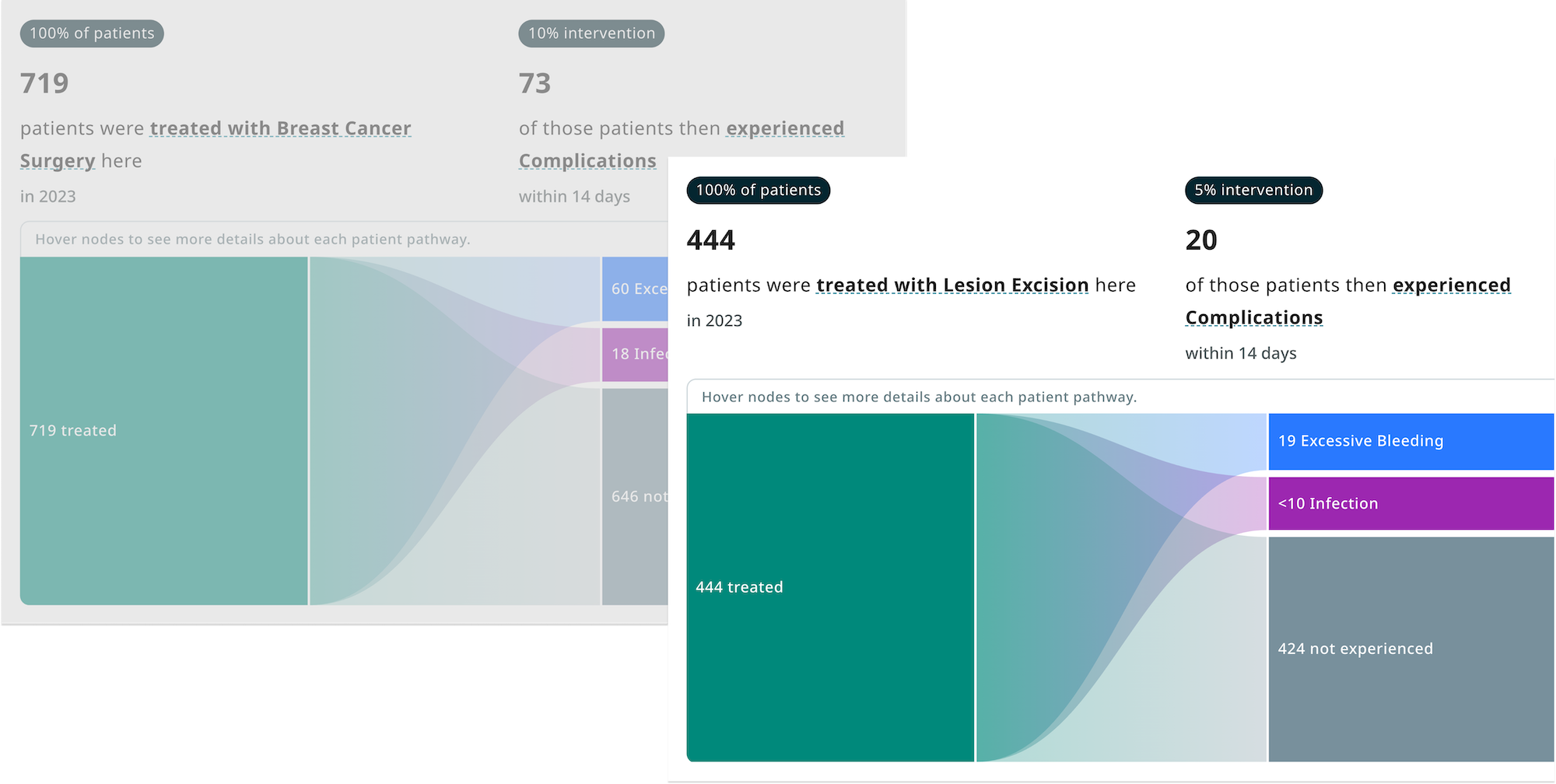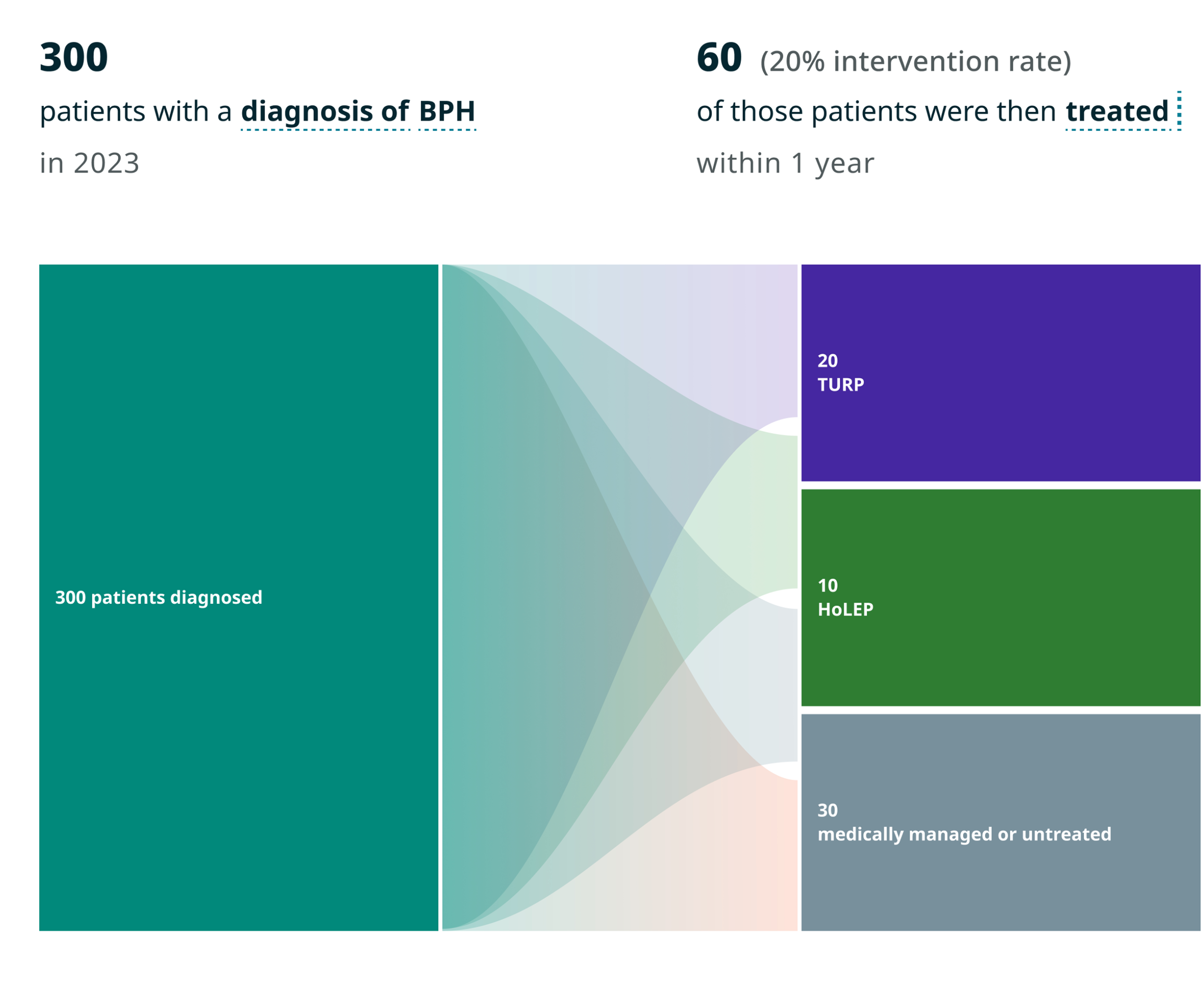Come see us at Flywheel 2025! Register Now »
The rules of MedTech sales have changed. Innovative new treatments still capture attention, but the increased scrutiny that comes with value analysis committees and value based care programs mean that MedTech companies need to prove the impact of new technologies with hard data.
Three forces are accelerating this shift: the rise of personalized treatment options for specific disease states, major investments in minimally invasive technologies, and increasing financial scrutiny.
Although companies have clinical trial data that demonstrates the efficacy of their new technologies, it’s been extremely difficult to find and collect data across existing treatment options and outcomes to clearly demonstrate improved overall outcomes.
Longitudinal patient data has become a critical asset to measure and compare patient outcomes. By analyzing whether patients need follow up care shortly after a procedure, MedTech companies can now answer complex questions such as:
By surfacing real world evidence, these companies are able to provide data-backed answers to the questions that matter to clinicians and administrators. Take breast cancer care for example. A health system might analyze historical data on excision procedures to identify common complications such as postoperative bleeding, prolonged drain usage, or infections—all of which can impact CMS reimbursement. By comparing these outcomes with those from a minimally invasive alternative, such as lesion removal guided by visualization technology, MedTech companies can make a compelling ROI and outcomes case for their technology. This evidence will help administrators make more informed decisions about care options, ultimately improving patient outcomes and operational efficiency.

Another powerful application of longitudinal data is identifying hospitals or providers that underutilize minimally invasive procedures. In many cases, patients are either medically managed despite limited effectiveness, or directed toward highly invasive surgical options that carry increased risks of complications, prolonged recovery times, and higher costs. By surfacing this gap, MedTech companies can engage hospitals in strategic conversations about expanding access to less invasive alternatives. These procedures often strike a critical balance: they offer better outcomes than conservative medical management while still minimizing the risks associated with traditional surgery. For hospitals, adopting such interventions can broaden the eligible patient pool, especially those who would otherwise decline care, and increase referral volume from providers seeking safer, more effective treatment pathways for their patients. With this insight, MedTech companies can position themselves as consultative partners driving both clinical value and system-wide efficiency.

In today’s tight healthcare economy, decision makers need more than a good product. They need proof it works and brings value. That’s where MedTech companies have a big opportunity: to stop being just suppliers and start becoming strategic partners.
By using real-world patient data to show how their technology improves outcomes and streamlines care, companies can build trust across the system, from surgeons to administrators. This kind of insight doesn’t just support sales; it sparks smarter conversations, faster adoption, and stronger, long-term relationships.
The companies that succeed with this new approach won’t just be selling devices - they’ll help shape the future of care.